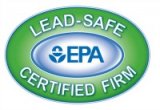Resources for Child Care Providers about Lead

Lead is particularly dangerous to children because their growing bodies absorb more lead than adults do and their brains and nervous systems are more sensitive to the damaging effects of lead. Babies and young children can also be more highly exposed to lead because they often put their hands and other objects that can have lead from dust or soil on them in their mouths.
Children may also be exposed to lead by eating and drinking food or water containing lead or from dishes or glasses that contain lead, inhaling lead dust from lead-based paint or lead contaminated soil, or from playing with toys with lead paint.The following links provide information about the dangers of lead poisoning and the steps that can be taken to prevent lead poisoning in a childcare facility.
Resources
- Connecticut Department of Public Health - Lead Information for Child Care Providers
- Children's Environmental Health Network - Eco-Healthy Child Care Fact Sheets - Lead
- Renovation, Repair, and Painting Rule - For Operators of Child Care Facilities
